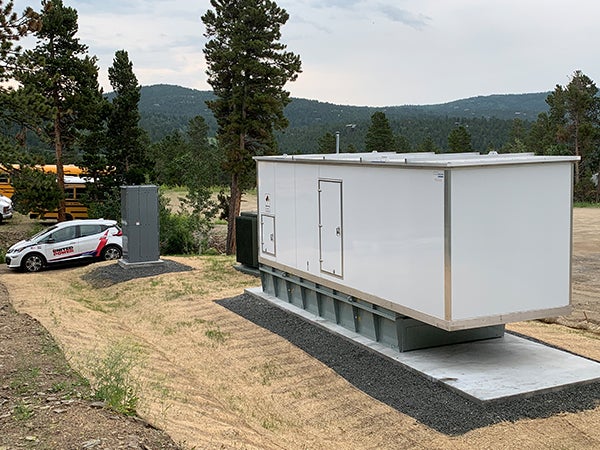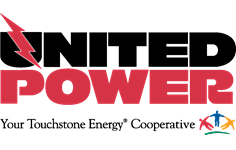Project Also Provides Alternate Energy Option for Emergency Management
 Brighton, CO - United Power, partnering with the Gilpin County Office of Emergency Management, placed a 625-kw diesel generator on the Gilpin County School District campus. The generator was installed as a safety enhancement to serve both the school and community members in the mountain territory.
Brighton, CO - United Power, partnering with the Gilpin County Office of Emergency Management, placed a 625-kw diesel generator on the Gilpin County School District campus. The generator was installed as a safety enhancement to serve both the school and community members in the mountain territory.
“United Power is excited to partner with Gilpin County on this key project for community members adjacent to the school district campus,” stated Dean Hubbuck, United Power’s Chief Energy Resource Officer. “Completing the project prior to the winter season should provide security and peace of mind to the residents in the area and provide a much-needed resource in the event of an extended power interruption.”
In the event of power outage, Gilpin County is required to notify parents and send students home because the school district doesn’t have a back-up power option. The installation of the generator alleviates concerns for school administration officials and parents of students. Additionally, the generator can provide a longer window of service with abbreviated services at the school, allowing Emergency Management to activate the site as an emergency warming center during an extended power outage in the area.
United Power upgraded existing infrastructure to ensure the generator can provide power to the entire school campus, including school buildings, gym facilities, the bus barn, water storage and delivery systems, pumping stations and the Eagles’ Nest Daycare Center. The generator operates on Tier 4 Diesel, with is an ultra-clean, low sulfur fuel and incorporates advanced emission reduction technologies, which exceeds state requirements for emission levels.
The cooperative will hold a ribbon cutting to celebrate the new generator on Friday, November 5 at 10 a.m. Members of the public are invited to attend and learn more about this addition and the enhanced safety benefits it will offer to the residents. Please click here to RSVP.
United Power is a member-owned, not-for-profit electric cooperative, delivering electricity to homes, farms and businesses throughout Colorado’s northern front range. The cooperative is one of the fastest-growing electric cooperatives in the nation, and in June joined the elite ranks of cooperatives serving more than 100,000 meters. The 900 square mile service territory extends from the mountains of Coal Creek and Golden Gate Canyon, along the I-25 corridor and Carbon Valley region, to the farmlands of Brighton, Hudson and Keenesburg. United Power is also a founding member of the NextGen Cooperative Alliance, dedicated to expanding the power supply and procurement options and reforming the traditional Generation and Transmission (G&T) business model. For more information about the cooperative, visit www.unitedpower.com or follow them on social media Facebook, Twitter, LinkedIn, YouTube and Instagram.

